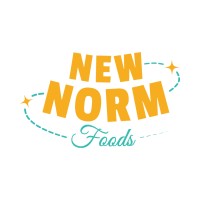6 Trending Topics of Food Research in India 2026
Food research in India is rapidly evolving as consumers seek healthier, sustainable, and convenient choices. This article puts light on various aspects of food, food-tech and related industry. Whether you are a food-tech business owner planning on your start-up research, a researcher on the journey of food academic research. These food research topics show how survey-based studies can reveal consumer behaviour, nutrition preferences, and market opportunities across urban and rural India.
1. Millet-based foods awareness and consumption behaviour in India
The United Nations General Assembly declared 2023 the International Year of Millets, and India, being one of the largest millet producers, took the lead in promoting millet-based diets. This announcement boosted consumer awareness and positioned millets as a healthier, sustainable food option. It also opened new opportunities for food research on millet consumption behaviour among Indian households.
Example Survey Questions:
- How frequently do you consume millets and millet-based food items?
- Are you willing to switch from traditional wheat and rice diets towards millet-based meals?
ThinkSurvey Tip: Use pictorial questions to test recognition of common millets (ragi, bajra, jowar, foxtail, etc.) and assess awareness of millet-based products like snacks, rotis, and breakfast cereals. A recent survey with 1000+ Indian participants compared wheat vs. rice vs. millet consumption patterns, revealing strong urban interest in millet-based packaged foods.
2. Street Food in India
India is home to the largest number of street food vendors in any country. Street food research is significant because of its role in urban food habits, affordability, and cultural diversity. While it provides easy access to meals, concerns about hygiene and nutrition persist — making this a fertile area for public health and consumer behaviour research in food studies.
Example Survey Questions:
- How frequently do you consume street food?
- How satisfied are you with the overall experience of available street food?
Live Example: Conduct a large-scale national level data collection surveying more than 10,000 participants across India. Map their current locations vis-à-vis available street food items, and assess street food safety, trustworthiness of vendors, quality of meals, and nutritional value of popular items. This researcher from LJ University, Gujarat published a successful research paper on perceived street food quality on repurchase intention, using audience panel services by ThinkSurvey.
3. Evaluating alternatives to dairy products
As more Indian consumers are moving towards vegan food habits, the food research on alternate dairy products (soy milk, almond milk, oat milk, coconut milk) are gaining popularity. This shift is driven by lifestyle choices, lactose intolerance, and increased health awareness.
Example Survey Questions:
- How many dairy alternatives are you aware of or have tried?
- What motivates you to choose these alternative products?
ThinkSurvey Tip: Read these 5 must-haves before launching your food-tech startup. Study the consumer’s buying pattern of milk & milk-based products like – from supermarket, local vendor, milk delivery app etc. This topic can also be a foundation in the area of dairy research as well.
Turn your Food Research idea into Results
Join leading researchers and start-ups who trust ThinkSurvey for reliable data and actionable insights
4. Restaurant dining experience
Example Survey Questions:
- How aware are you about current environmental issues?
- Are you willing to use public transport to avoid spreading air pollution?
ThinkSurvey Tip: Restaurant owners or food researchers can combine customer satisfaction surveys with employee satisfaction studies for restaurants. A 360-degree approach gives insights into both customer expectations and staff motivation, leading to improved dining experiences.
5. Alternatives to meat-based foods
Growing concerns around health, environment, and animal welfare are making Indian consumers curious about plant-based protein and lab-grown meat research. With urban populations becoming more conscious of fitness and sustainability, this area of food research is rapidly gaining traction.
Example Survey Questions:
- Have you tried any meat alternatives such as soy nuggets, mock meat, or lab-grown protein?
- Would you be willing to replace chicken or mutton with plant-based substitutes for health or environmental reasons?
Live Example: This researcher from JGBS collaborated with ThinkSurvey for an effective survey data collection through a time-lapsed study on food research. His area of study was plant-based meat. The researcher compared adoption trends across age groups and cities. Studied perceptions like “taste doesn’t match real meat” or “too expensive.” Researchers can also explore willingness to pay for environmentally sustainable food products versus traditional meat.
6. Viability of health supplements
The Indian market for health supplements, from protein powders to vitamins and nutraceuticals – is expanding fast, especially post-COVID. This raises important questions for food and nutrition research in India: Are supplements replacing natural diets, or merely complementing them? Researchers can assess key variables of study the factors influencing purchase decisions, such as – cost, flavour, colour, taste, packaging, advertising and promotions, health benefits, etc.
Example Survey Questions:
- Do you consume health supplements regularly? If yes, which categories (proteins, multivitamins, ayurvedic/herbal supplements)?
- What is your primary motivation – fitness, immunity, or doctor’s prescription?
Research Tip: Explore urban vs. rural adoption, online vs. offline purchase preferences, and concerns about product authenticity. Researchers can also study how health literacy impacts supplement consumption patterns, especially among youth, athletes, and working professionals.
How to Choose the Right Topic in Food Research?
Selecting a food research topic can feel overwhelming, especially with so many emerging areas like plant-based diets, functional foods, sustainable packaging, and food safety technologies. The key is to strike a balance between novelty, feasibility, and relevance.
- Start by scanning the literature and industry reports to understand current debates—whether it’s consumer preferences for organic food, the impact of ultra-processed foods on health, or innovations in agri-tech. Pay attention to gaps in existing studies, such as underexplored regional diets or consumer behavior in Tier-2 and Tier-3 Indian cities. Conferences, webinars, and discussions with faculty or peers can also reveal timely and practical research angles.
- Once you shortlist 2–3 topics, assess their feasibility. Do you have access to reliable data, survey tools, or funding to explore them? Consider collaborating with experts if resources are limited. Always validate your ideas by seeking feedback from mentors or colleagues – fresh perspectives help refine hypotheses and identify blind spots.
- Finally, design your project with clear methods, timelines, and milestones. Choosing the right food research project idea ensures not only academic value but also practical insights for businesses, policymakers, and society at large.
How ThinkSurvey Enables Food-tech Start-ups and Researchers in Food Research?
Many researchers in food studies and start-ups in the food-tech sector often feel stuck at critical stages of their journey:
- “I have the idea, but don’t know where to start.”
- “I have the questionnaire ready, but I’m stuck at the data collection stage.”
If this sounds familiar, you’re not alone. Conducting impactful food research in India requires two essentials:
- A well-defined target audience that reflects diverse consumer groups across Tier 1, Tier 2, and Tier 3 cities.
- Reliable academic and market research tools to capture authentic insights into eating habits, nutrition choices, and food-tech adoption.
At ThinkSurvey, we bridge this gap for both academics and food-tech businesses. Whether your project focuses on millet consumption behaviour, adoption of plant-based foods, health supplement usage, or restaurant experiences, our platform helps you gather high-quality responses across states, age groups, and income brackets.
Why Choose ThinkSurvey for Data Collection in Food Research?
- Audience Panel – Access a pre-screened panel of Indian consumers from all states, ensuring your study reflects real-world eating habits and market diversity.
- Wide Demographics – Students, working professionals, homemakers, business owners — with responses balanced by gender, age, income, and region.
- Expert Research Team – Specialists who understand both academic food research methodologies and market validation studies.
- Scalable Data Collection – From 50 to 5,000+ responses, tailored to your project scope — whether it’s concept testing, consumer surveys, or persona mapping.
- Timely Delivery – End-to-end project execution delivered within the agreed timeline.
- Dedicated Support – A single point of contact guides you from survey design to data analysis.
With ThinkSurvey, you don’t just collect responses — you generate actionable insights into consumer behaviour, food-tech adoption, and nutrition trends that can power both academic studies and business strategies.




